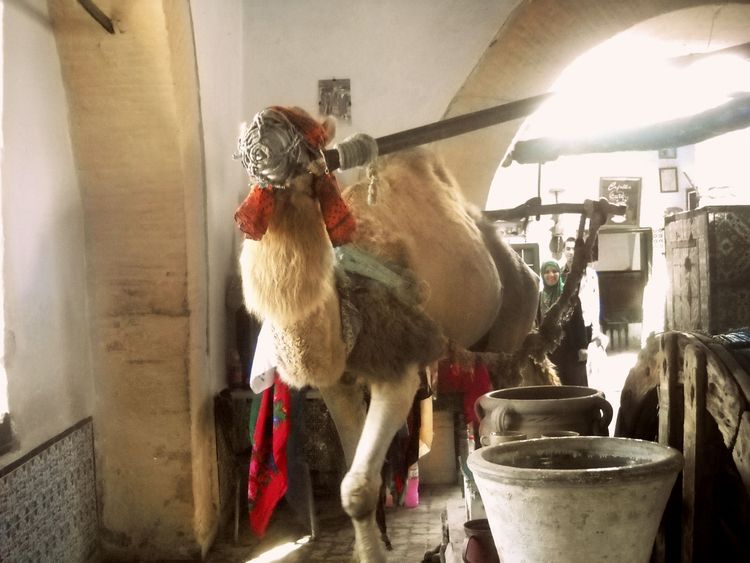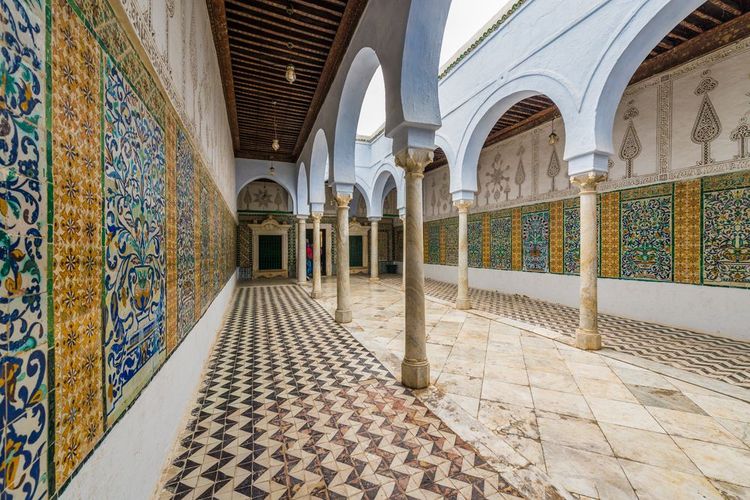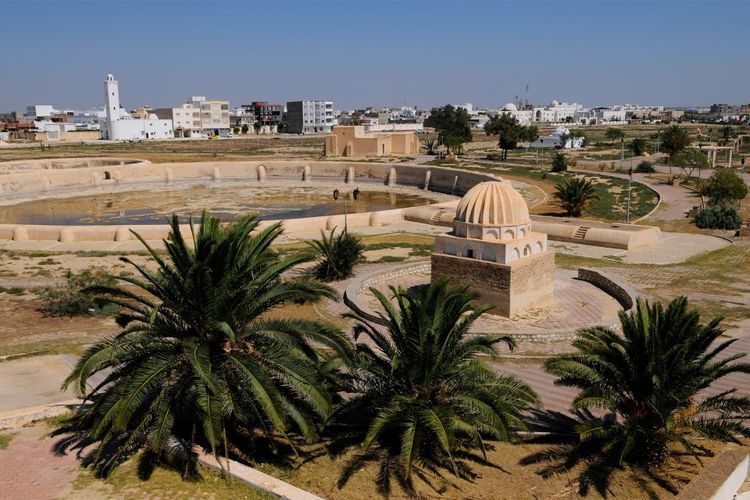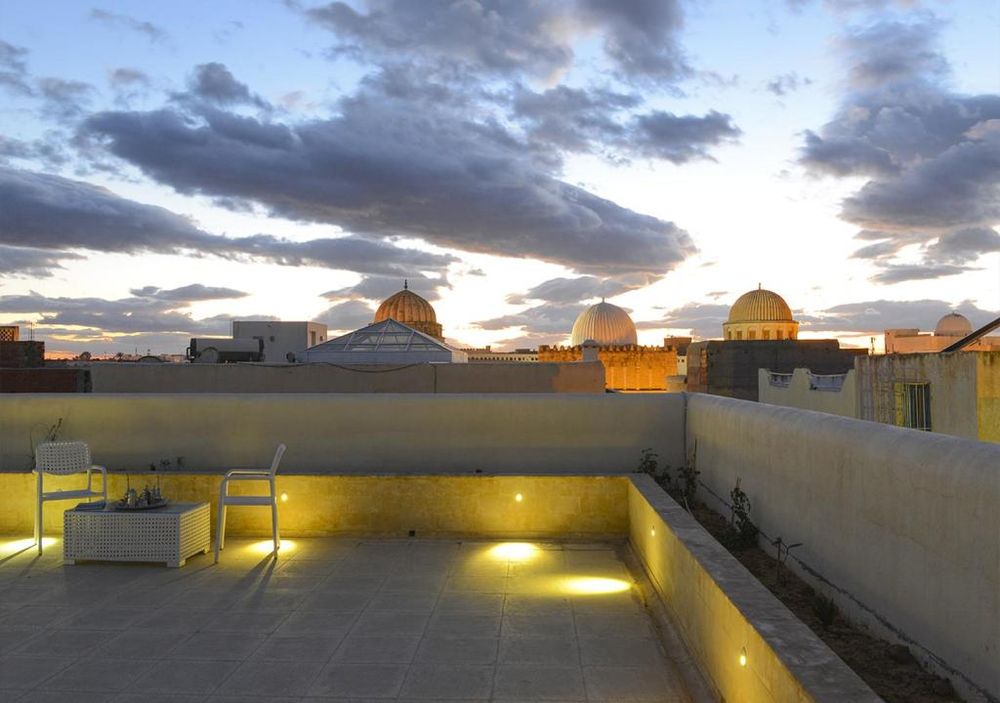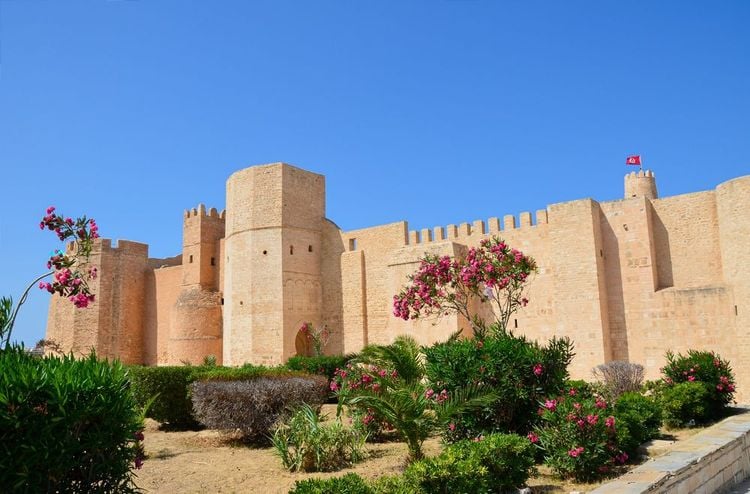The fourth holiest city in Islam, Kairouan is the administrative capital of the eponymous governorate. Located 150 kilometres south-west of Tunis and fifty kilometres west of Sousse, it is the first holy city in North Africa. Founded in 670, Kairouan was the first Arab town in North Africa. The site was far enough from the coast to avoid the assaults of the Byzantine fleet then controlling the Mediterranean Sea. The qayrawān (garrison camp in Arabic) gave the site its name.
The mysterious Bir Barrouta well, which dates back to the origins of the city, is the reason why Kairouan is a holy city: the source is said to be linked by underground rivers to the sacred well of Mecca. The Great Mosque, built as soon as the city was founded in 670, contributed to Kairouan's reputation in the Islamic world, making the city a major centre of influence for Arab culture and Islam. Kairouan played a significant role in the Arabisation of the Berbers and Latin-speaking populations of Ifriqiya. Even today, Tunisia's spiritual capital, the country's fifth-largest city, enjoys a great reputation throughout the Muslim world.


